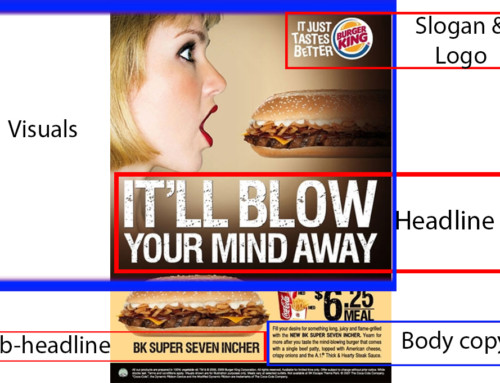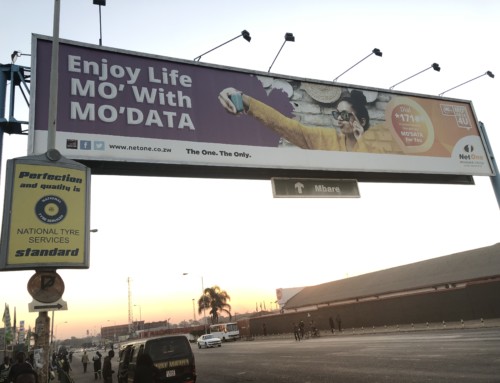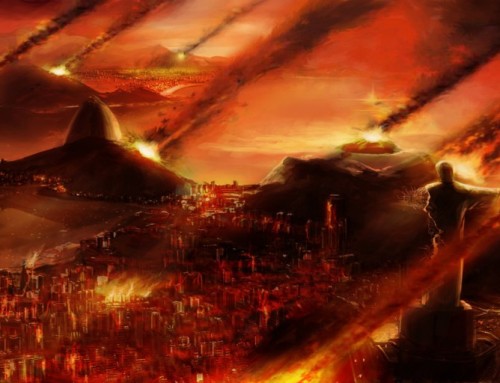Why Strategy Is Not Enough
Hello guys. How are you? I am fine. Strategy is a driving force in a company but there are other factors that you consider in order to attain results. Previous articles touch on some of the aspects we are discussing today. In that case let’s not dwell on them. The aspects from other articles do not occur in a vacuum. These various marketing and strategic aspects exist in a system, more like an engine, and each aspect plays a critical role. Things go wrong for companies and you notice that even companies with strategies that look sound on paper stumble at the smallest hurdles. The reason that this is the case is because strategy is not everything. Implement strategy within the McKinsey 7s Framework.

Definition of The McKinsey 7S Framework
The McKinsey 7S Framework is a management model from well-known business consultants Robert H Waterman, Jr. and Tom Peters (who also developed the MBWA — “Management by Walking Around” motif, and author of In Search Of Excellence in the 1980s. This is a strategic vision for groups, to include businesses, business units, and teams. Our 7 Ss are structure, strategy, systems, skills, staff, and shared values.
The McKinsey 7s Framework is an organisational analysis tool that assesses and monitors changes in the internal situation of an organisation. A theory for the McKinsey 7s Framework is, for an organisation to perform well, these seven elements should align and reinforce each other. So, the McKinsey 7s Framework identifies what areas to realign to improve performance, or to maintain alignment (and performance) during other types of change. (Wikipedia)
One can argue that all of these elements are controlled by strategy but the question is when are you ever in control of these aspects all at one go? Even if you are the owner of the firm you have to engage the people who man all of these functions to ensure that there is alignment. So your function of creating and implementing the strategy will not be all that matters for the success of the organisation as you will have to reach out to the other Ss in the McKinsey 7s Framework.

Implementation of The McKinsey 7S Framework – Cafe Nush v Starbucks
I do not feel free in Cafe Nush as I feel like an outsider. As I result I do not sit at the center of the restaurant. The staff is not very friendly and cake is not fresh.
Let us use the McKinsey 7S Framework to compare Cafe Nush to Starbucks, the world’s SI unit when it comes to coffee shops. Starbucks pays attention to all of the Ss in the McKinsey 7s Framework while Cafe Nush seems to just use the strategy aspect.
Shared Values
I talk about how to write a mission statement for your strategic plan here. After the mission are the values. Find the values at the center in the image above (McKinsey 7S Framework). Values are organisational values that the organisation’s leadership develop. Other members in the organisation adopt the values. The other term is core values. (Study.com)

In an attempt to pluck Cafe Nush’s values off its website I analyse the page in the image above. Starbucks is number one because it sells an experience in the form of good music, a comfortable environment and good coffee. The values are what contributes to the positive aspects that I have stated above. The coffee shop Starbucks creates a connection with its customers because they are not just about the coffee. Their values are visible on their website so that you can read them and can relate to them when you are being served in their shops.
Now if Cafe Nush does not see it as a priority that they display their values to us it means that they are concentrating on their strategy only and not this ‘S’ of the McKinsey 7s Framework. Cafe Nush does not display the values on the wall. If we do not know their values then how do we know what Cafe Nush stands for? How do we know what it is about? How do they create the emotional contact between us and them? Strategy is not everything my friends, also consider the values.

Strategy
If you have missed my articles on strategy you can start with this one. The values are the soul of the organisation which determine how to create the strategy. Let us see how Starbucks’ values talk to their strategy. The values are in the image above. Let’s put Cafe Nush in the mix to see how it fares if they have the same goals and the same values as Starbucks. I got Starbucks’ strategic insights from their latest strategic overview.
| STARBUCKS STRATEGIC GOAL | ALIGNMENT WITH SHARED VALUES | COMPARISON WITH CAFE NUSH |
|---|---|---|
| Be The Employer Of Choice | This aligns with the statement - 'With our partners, our coffee and our customers at our core, we live these values:' Being the employer of choice is seen in how the staff is so friendly as they are treated as partners. | The staff at Cafe Nush is generally grumpy. What is documented in the strategy has not been aligned with whatever values they might have. They probably do not feel like partners and as such they do not act like it. |
| Lead In Coffee | This matches with the value - 'Delivering our very best in all we do, holding ourselves accountable for results'. | Sometimes you get hot coffee, sometimes you get cold coffee. You never get enough sugar. There is no accountability more like take it or leave it. |
| Grow The Store Portfolio | This matches more with their mission which is - 'To inspire and nurture the human spirit - one person, one cup and one neighbourhood at a time.' | There is one Cafe Nush (that I know of). I wonder why they have not grown much. Not enough repeat business maybe? |
| Create New Occasions | This aligns with this value - 'Creating a culture of warmth and belonging, where everyone is welcome.' Various occasions cater for different people making everyone feel at home. | It's the same old thing, different day at Cafe Nush. I also have never felt welcome to be honest. |
| CPG Brand Growth | This matches more with their mission which is - 'To inspire and nurture the human spirit - one person, one cup and one neighbourhood at a time.' The more people you serve, the more your brand grows. | There is still one Cafe Nush and the shop has been around for a long time. Maybe they do not have the aim to grow, it's possible. |
| Build Teavana | Building their tea business matches with their value - 'Acting with courage, challenging the status quo and finding new ways to grow our company and each other.' They are known for coffee, now their are going into tea, which is finding ways in which to grow the business. | I have not seen signs of Cafe Nush diversifying into other things in the times that I have been there. Maybe their program with organic meals can be mentioned here. |
| Extend Digital Engagement | This goal is aligned to - 'Being present, connecting with transparency, dignity and respect.'. Starbucks mobile application makes Starbucks more present in people's lives as they now carry Starbucks with them everywhere that they go | As we discussed earlier Cafe Nush's website is down. This is doing the opposite to Starbucks as far as digital engagement is concerned. |
As you can see there is a relationship between the strategy and the shared values at Starbucks. The strategy is actually derived from the shared values. Strategy is not everything, it has its master.
Structure
An organisational structure is a system that is used to define a hierarchy within an organisation. It defines each job, its function and where it reports to within the organisation. This structure is developed to establish how an organisation operates and assists an organisation in obtaining its goals to allow for future growth. The structure is illustrated using an organisational chart. (Chron.com)
The structure should match the business’ current makeup in this case the strategy, the shared values and the other Ss.
In this example let us see how Starbucks’ structure is aligned to its strategy. We are changing the combinations because as I said earlier every part should be aligned to all the other parts.
| STARBUCKS STRATEGIC GOALS | ANALYSIS OF THE ALIGNMENT OF THE GOALS TO THE ORGANISATIONAL STRUCTURE OF STARBUCKS |
|---|---|
| Be The Employer Of Choice | All of the policies that are created by Starbucks' HR department are applicable to all of Starbucks' cafes. This creates a feeling of equality among employees |
| Lead In Coffee | Starbucks has 3 geographic divisions which all have a high degree of flexibility in adjusting strategies and policies to suit specific market conditions. This ensures that they stay in the lead regardless of who they are serving |
| Grow The Store Portfolio | When Howard Schultz returned as CEO of Starbucks in 2008 he created an organisational structure were regional divisions were created and better training was provided in Starbucks cafes. The increased sales that came as a result of the new structure has helped to grow the store portfolio |
| Create New Occasions | Starbucks has 3 geographic divisions which all have a high degree of flexibility in adjusting strategies and policies to suit specific market conditions. This means that all new occasions that will be created will be relevant to the region in which they will be introduced |
| CPG Brand Growth | Starbucks has product based divisions e.g. coffee, baked goods and merchandise. Divisions ensure growth as specialisation and other benefits give Starbucks an edge over its competitors |
| Build Teavana | The same as the above. |
| Extend Digital Engagement | The structure of Starbucks includes a marketing department. They come up with ideas like the mobile app as they are focused solely on such initiatives. They are also given adequate resources to operate. This would not be possible in a structure where marketing is not a deliberate function on its own and is not taken seriously |



As you can see for a strategy to achieve its goals it has to be derived from shared values and implemented through a structure for example. It cannot do the job in isolation as the wrong structure will ensure that the strategy will not work. Strategy is not everything.
Systems
At Cafe Nush you never know what you are going to get. When I went there on a date we got some stale cake with jam and some cold coffee. Next I went with some friends and we got some hot coffee, great! I went there to have a meeting with some people who are now my business partners at Syntek Global and I got some orange juice which was bitter. After that my friend who stays in the USA took me there and I had a very good meal. On the last visit I got good customer service from the waiter.
One word describes my experiences at Cafe Nush – inconsistency. A look at the comments that were made by customers below will go some way in validating my claim.




All the times that I went there I always thought that there was an issue in terms of the systems, processes and procedures. Systems that are implemented well ensure that there is some consistency in terms of the operations.
A business system is a methodical procedure or process that is used as a delivery mechanism for providing specific goods or services to customers. (BusinessDictionary.com)
In this case we will analyse and see if Starbucks’ systems are aligned to its structure.
| STARBUCKS ORGANISATIONAL STRUCTURE | ANALYSIS OF THE ALIGNMENT OF THE STRUCTURE WITH THE SYSTEMS |
|---|---|
| Starbucks has a functional structure e.g. HR and Marketing Departments | The HR department ensures that there is consistency by ensuring that staff in all the locations receive the same amount of training leading to standardisation of their products and services |
| Starbucks is also divided into 3 regions e.g. The Americas | The HR Department ensures that there is relevance by training all of the teams in the various regions in ways that are applicable to their regions |
| Starbucks has product based divisions e.g. coffee and baked goods | The separation of the departments that handle products that are often sold together allows for the specialisation that has made Starbucks coffee, for example, as good as it is. All the measurements in each cup of Starbucks are precise down to the last few millilitres |
| The employees are grouped into teams e.g. The teams in the cafes | Starbucks ensures that it a global brand which is also local by using the teams in the various areas to garner insights about their local markets. This helps the marketing department, for example, to create occasions that are relevant for the various locations |
As you can see with Starbucks every S relates to the next S. Strategy is not everything because without the correct systems in place to ensure consistency and relevance in all situations nothing will work properly.
Skills
Starbucks claims that they are so much more than what they brew. They claim to provide a good atmosphere as well, among other things. In order to walk the talk Starbucks has to have employees with the relevant skills in order to turn their claims into action effectively otherwise their strategy will mean nothing.
Let us conduct a head to head contest, comparing how Starbucks ensures that its baristas will have the required skills versus what I have witnessed at Cafe Nush.
| HOW STARBUCKS TRAINS ITS WAITERS | HOW THINGS HAPPEN AT CAFE NUSH |
|---|---|
| There are training booklets that are used for customer service training | The customer service is poor so the atmosphere is not very good |
| Drink dice are used to train the baristas on how to say out particular combinations of coffee | The waiters are not fluent and often get stuck when you throw a lot of names at them |
| There are cappuccino training cups to ensure that baristas get the measurements right | At Cafe Nush the beverages taste different every time, meaning that the measurements are different every time. |
| Coffee and tea passports are used to give the waiters enough information on the drinks being served | Get clever with the waiters, ask them more about what is on the menu like the ingredients, and they will choke |
| Hands on practice is given to waiters as half of their training hours are used on the floor with a guide watching over them | I have never seen a situation where it seems like there is on the job training going on e.g. a waiter being shadowed by a supervisor |
The employees’ skills are perceived more by your customers than your strategy. If the employees are not trained well by the HR department you will have issues like Cafe Nush. Strategy is not everything, it is only effective when the tactics are implemented through competent staff members.
Staff
Earlier on I talked about the fact that nothing is predictable at Cafe Nush. This high level of unpredictability has a lot to do with the staff members. I am going to borrow a bit from Forbes.com and take a look at what makes great staff members. Great staff members are required in order for a strategy to be effective. We analyse and determine whether or not the staff members at Cafe Nush bear these same characteristics.
| CHARACTERISTICS OF GOOD EMPLOYEES | HOW EMPLOYEES AT CAFE NUSH COMPARE TO THESE CHARACTERISTICS |
|---|---|
| Competent - Does the potential employee have the necessary skills, experiences and education to successfully complete the tasks you need performed? | No they are not competant |
| Capable - Will this person complete not only the easy tasks but will he or she also find ways to deliver on the functions that require more effort and creativity? | On this one we can go back to that example were I said if you ask for a lot of information from the waiter he/she will get stuck |
| Compatible - Can this person get along with colleagues, and more importantly, can he or she get along with existing and potential clients and partners? | The waiters were not friendly to me so I can say that we are not compatible |
| Commitment - Is the candidate serious about working for the long term? | My sister's friend did not work there for long. She talked of Cafe Nush being a 'halfway house' were you do not stay for long |
| Character - Does the person have values that align with the company? | I do not know about this one. Maybe the employees are a product of the company's culture. Who knows. |
| Compensation - Does the person hired agree to a market-based compensation package and is he or she satisfied with what is offered. | My sister's friend claimed that most of the employees at Cafe Nush are there because they have nowhere else to go |
So let us say that Cafe Nush has a great strategy laid out on paper, but they miss it when it comes to the staff as shown in the table above. The strategy produces poor results with the staff members making the customers feel bad most of the time? The strategy is not everything, good staff members are required as well.

Style
Organisational style helps to distinguish a firm as it shows its distinct characteristics when compared to others. The organisational style influences employees and the business’s performance. The organisational style is most observable on the shop floor. How employees interact with each other and with the customers.
Let us see how the organisational style/culture in Starbucks aligns with their strategy.
Servant Leadership – Starbucks emphasises support for subordinates so that everyone grows in the company. This aligns with their strategic objective of being the employer of choice
Relationship-driven approach – The company emphasises the fact that employees should be warm and friendly towards each other. This aspect aligns well with them being the employer of choice. We spend most of our time at work and so good relationships at work will make us love a workplace and want to work there
Collaboration and communication – Starbucks wants its employees to do so at all times. This is seen in how the waiters communicate with each other when fulfilling orders for example. Collaboration and communication aligns with all of Starbucks 7 strategic objectives that we talked of earlier. Do you agree?
Inclusion and diversity – Starbucks has an anti-discrimination policy that covers race, ethnicity, sexual orientation, age etc. This ensures that everyone feels like a part of the family. This aligns with the objective of growing the store portfolio as Starbucks is looking to grow in different regions in the world where you find people of different race, ethnicity, sexual orientation, age etc.
Conclusion
As you can see strategy clearly is not everything. It is merely a piece of a puzzle which contains shared values, structure, systems, skills, staff and style. Without being aligned to these elements a strategy fails. Ignore the other elements of the McKinsey 7S Framework at your own peril. So, do you agree with my opinion, or you disagree? Come discuss in the comments section below.
Thanks
Ruvimbo







Thanks Ruvimbo. Food for thought. These 7Ss combined well I believe give a good organisational culture. The CEOs (existing companies and start-ups) are the ones most involved in ensuring that an organisation grows towards achieving these 7. It is a must-achieve frame work. But I am sure that if these CEOs made it their sworn duty to ensure that every member of the organisation, from the C-suite to the tea room, is made to know and live them – then that organisation will be one super-performing system. Both shareholders and customers win. There will be no silos in it.
You are welcome Taurai thanks for reading. Yes most of the time these issues start and end in the board room and the principles do not cascade down to the operational level. Another area that is forgotten in an organisation are those third parties that provide one kind of service or another in the company itself. Why are these third parties treated as outsiders yet they work within the organisation on a daily basis? The security companies, the catering companies etc. that work in the canteen all affect the organisation but they are not roped in when it comes to these issues. For example if the Administration department just hires a catering company and does not ensure that it provides good food, adequate portions etc you create a situation where an employee will be angry at least once a day, during lunch time and this will affect productivity in the organisation. The 7Ss should also include these third party companies to ensure that every angle is covered.